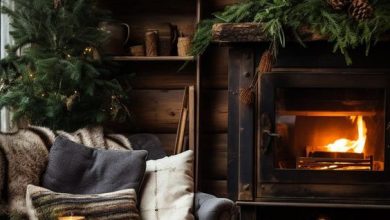Get the most out of your space with these designer tricks.
By Debbie Wolfe
Do More With Less
Just because you are short on space doesn’t mean it’s time to pack up and move. Professionals routinely use interior design tricks that make living spaces more efficient and make small spaces appear larger than they really are. Here are 14 design ideas and layout tricks that will make the most of your living area, whatever its size.

Declutter
Decluttering is the simplest way to maximize your space. The fewer belongings you have, the larger your space will look. So, before you change around the layout of your living space, start by purging unnecessary items.

Use Multipurpose Furniture
Once you’ve decluttered, you need to figure out a way to keep your space tidy and organized. Fortunately, there are many creative furniture options that will help you stash the stuff you need in style. Look for pieces that offer something extra: coffee tables and trunks or ottomans with lift tops and hidden storage for blankets, or end tables and credenzas with drawers. These multipurpose furnishings will give you more storage without taking up too much valuable floor space.

Bounce Light
The strategic placement of mirrors is a tried-and-true designer trick for opening up a space. Mirrors make a room appear larger by reflecting the surrounding space, and they can be carefully placed to reflect natural light sources as well, making a small living space brighter.

Get Curvy
Round tables are easier to navigate around than their more angular cousins, and they use space efficiently. Place small round tables between chairs and sofas, or opt for a generous round or oval table in the dining room. If you are super tight on space in your living room, invest in a set of nesting tables that stack away nicely and provide extra surfaces when needed.

Keep Things Moving
Before you start hauling around any furniture, you should figure out how you want people to navigate around the room. You need to allow enough space for people to travel comfortably into and out of the room as well as around the furniture. That means leaving about 30 inches around any pieces of furniture you need to be able to walk around. Allow 14 to 18 inches between a coffee table and sofa to keep items on the table within reach.

Go Light
Dark colors absorb light, so if you’re trying to maximize the illusion of space, keep the walls and furniture neutral and light. These lighter colors help make the most of a room’s brightness because they reflect the light that enters a room. You can then bring in more vibrant colors with artwork, throw pillows, and another decor.

Scale Down
To make a room seem larger, scale down the size of the furniture. For instance, use a love seat instead of a sofa or sectional. The smaller pieces will fit the room better and open up floor space.

Define Areas
Rugs are fun and practical decorative accessories because they not only add a pop of color and interest, but they also help define a functional area within a larger space. Placing an area rug in a section of a room draws the eye, cushions the feet, and suggests a purpose for that space. When you create distinct areas in a room, you enhance its functionality and make more efficient use of the space.

Make Use of Corners
Corners are notoriously underused spaces with plenty of potential, so make the most of them. They’re excellent spots for a reading nook consisting of an armchair, table, and floor lamp. As another option, consider purchasing a shelf or a small piece of furniture designed to fit snugly in a corner to make use of the space and gain some storage to boot.








